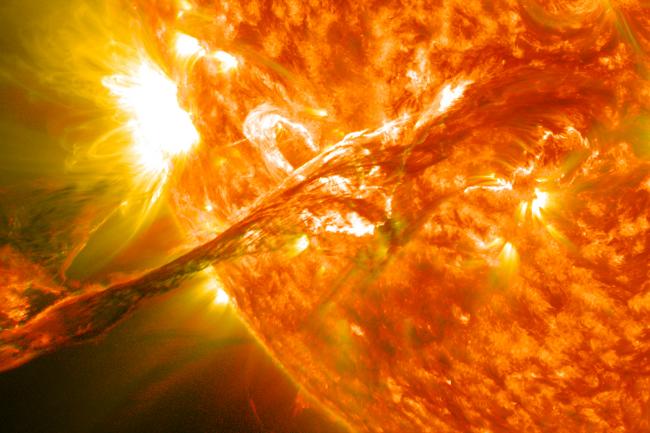PINTofALE (Package for Interactive Analysis of Line Emission)
Astrophysical environments are often strikingly different from those on Earth, but there’s no direct way for astronomers to measure conditions in space. Instead, they must infer environmental properties from the behavior of atoms, particularly the way they absorb and emit light. For this to work, researchers need to use databases of atomic spectra, which requires writing or using computer code. PINTofALE (Package for Interactive Analysis of Line Emission) is a software toolkit designed to streamline this process, giving astronomers a powerful way to use X-ray and ultraviolet atomic data without having to write their own code every time. The package was developed by researchers at the Center for Astrophysics | Harvard & Smithsonian, and is provided for free as a service to astronomers.

On August 31, 2012 a long filament of solar material that had been hovering in the sun's atmosphere, the corona, erupted out into space at 4:36 p.m. EDT. The coronal mass ejection, or CME, traveled at over 900 miles per second. The CME did not travel directly toward Earth, but did connect with Earth's magnetic environment, or magnetosphere, causing aurora to appear on the night of Monday, September 3. Pictured here is a lighten blended version of the 304 and 171 angstrom wavelengths taken from the Solar Dynamics Observatory.
Essential Tools for Professional Astronomers
Computerized analysis is an essential step in the process of research for every professional astronomer and astrophysicist. That step can be extremely time-consuming, though, particularly if the researcher has to home-brew their own code for analyzing observational data or interfacing with databases. PINTofALE was designed both to streamline these processes for identifying atomic spectra and to allow astronomers greater control over them.
The toolkit uses the Interactive Data Language (IDL), a programming language commonly used by astronomers. PINTofALE includes library functions to talk to databases of ultraviolet and X-ray atomic spectra, extract particular spectral features from observational data, and build models from the information.
PINTofALE was originally developed in the late 1990s for studying plasmas, but it was extended to include a larger variety of general-purpose tools for analyzing astronomical data. It is freely available to researchers around the world through the GitHub project hosting service.